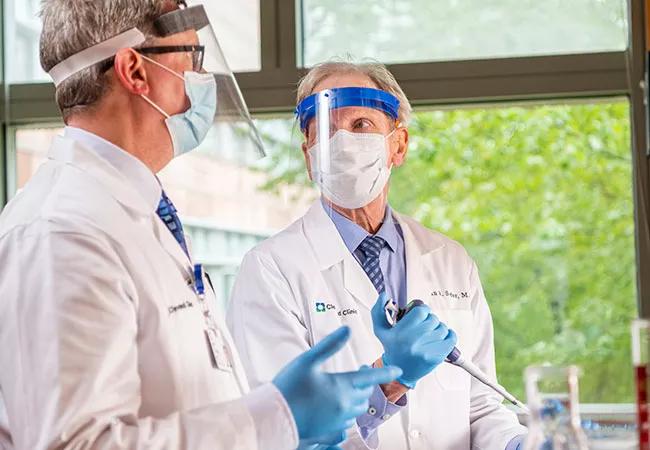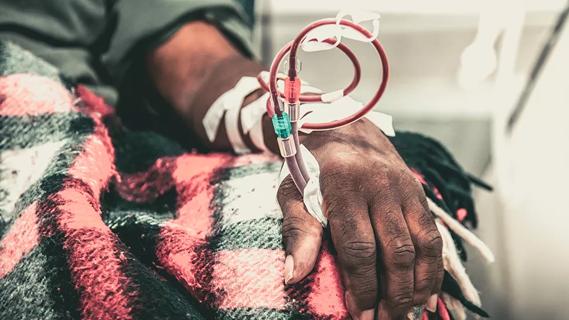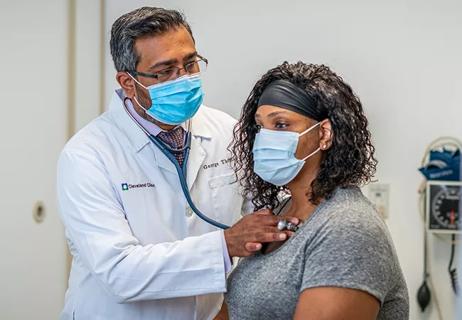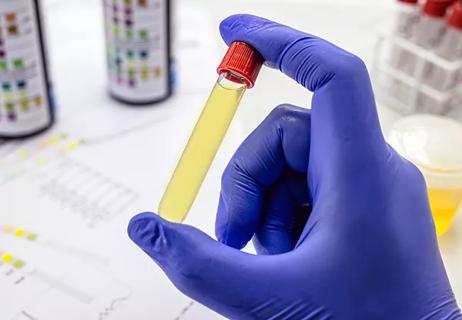Research, innovation and new funding mechanisms

“Dialysis was a game-changer for kidney care, but that was nearly 80 years ago,” says John Sedor, MD, a nephrologist and physician-scientist at Cleveland Clinic.
Cleveland Clinic is a non-profit academic medical center. Advertising on our site helps support our mission. We do not endorse non-Cleveland Clinic products or services. Policy
The need for better therapies is dire. About 37 million adults in the U.S. may have chronic kidney disease, and nearly every 24 hours about 340 people begin dialysis to treat kidney failure, reports the Centers for Disease Control and Prevention.
Changes in national policy and new federal initiatives have played pivotal roles in fueling new efforts for kidney disease research and therapies. In July 2019, President Trump formally announced the Advancing American Kidney Health Initiative, an executive order administered by the Department of Health and Human Services (HHS) that aims to improve preventive care, increase accessibility and education of affordable treatment and modernize the transplant program.
The Kidney Innovation Accelerator (KidneyX), which launched the year prior, is a public-private partnership between HHS and the American Society of Nephrology. The organization prioritizes funding for high-impact prevention, diagnostics and treatments for kidney diseases through prize competitions. Dr. Sedor chairs the steering committee for KidneyX. The group just announced the six winners of the Redesign Dialysis Phase 2.
He explains, “The goal of this round of KidneyX prizes was to accelerate innovations in dialysis. Kidney replacement therapy is an area poised for improvements in terms of safety, accessibility, efficacy and patient experience.” These six innovative technologies will facilitate development of wearable or implantable artificial kidneys, which would permit treatment at home rather than in centers.
“There are many reasons why patients may prefer to be dialyzed in their own homes. In extreme cases, as we’ve seen this year, like severe local weather or a pandemic, it can be unsafe, quite frankly, for them to leave their homes. We want to honor their desires, and make it safe and easy for them,” says Dr. Sedor.
In addition to new innovations, there’s been an influx of NIH-funded, multicenter studies leading to large-scale efforts to drive patient-centered research in a way that hasn’t been done before in kidney disease. Last year, Cleveland Clinic began enrolling its first patients in two of these trials, the Kidney Precision Medicine Project (KPMP), led by Dr. Sedor along with colleagues Emilio Poggio, MD, and John O’Toole, MD, and the APOL1 Long-term Kidney Transplantation Outcomes Network (APOLLO) study, led by Dr. Poggio.
Jonathan Taliercio, DO, will be leading a new NIH-funded study that will leverage data-sharing and collaboration between two major studies, the Chronic Renal Insufficiency Cohort (CRIC) and the KPMP, with the goal to explore potential connections between longitudinal clinical data from CRIC and molecular data obtained from the KPMP.
Alongside these studies are robust and complementary basic research programs at Cleveland Clinic Lerner Research Institute in the laboratories of Drs. Sedor, O’Toole and Leslie Bruggeman, PhD, another staff member working in this area. This includes work investigating the mechanisms by which APOL1, a genetic variant with origins in West African countries, causes progressive kidney disease.
Additionally, Robert Fairchild, PhD, staff in the Department of Inflammation and Immunity, developed pioneering models to mediate heart and kidney transplant rejection that are now used by many laboratories. He and collaborators have developed a non-invasive method using RNA in the urine to detect kidney graft injury with the goal to improve transplant outcomes.
In the last year, the COVID-19 pandemic and social justice movements have centered important conversations about public health and healthcare inequities within Black and minority communities.
“Kidney disease is very much a disease of disparities,” remarks Dr. Sedor. “It’s our job as clinicians to recognize its disproportionate effect on patients from historically marginalized communities, advocate for these patients, and provide adequate resources for care.”
Incorporating diverse patient voices has been a focus for nephrology study leaders at Cleveland Clinic. Both KPMP and APOLLO have community advisory boards, which includes patients, caregivers and advocates, as partners in study leadership.
With new funding mechanisms and robust research and innovation programs in place, Dr. Sedor remains more hopeful than ever about the future of kidney care. “Change agents at local and federal levels are talking about tackling kidney disease with the same energy as seen with cancer funding and activism,” he says. “It’s been a long time coming, but this is all really exciting for us.”

Clinicians should individualize dosing practices based on patient risk factors and preferences

Fully-automated process uses preop CT, baseline GFR to estimate post-nephrectomy renal function

Could mean earlier treatment, but also could have negative effects

Identifying barriers in the renal genetic assessment of Black patients

Getting patients to their goal blood pressure

Study highlights benefits of nephrologist-led urine sediment analysis

Using sequencing data to identify novel factors linked to kidney disease with unknown origin

Program plays key role in diagnosis and management of genetic kidney diseases